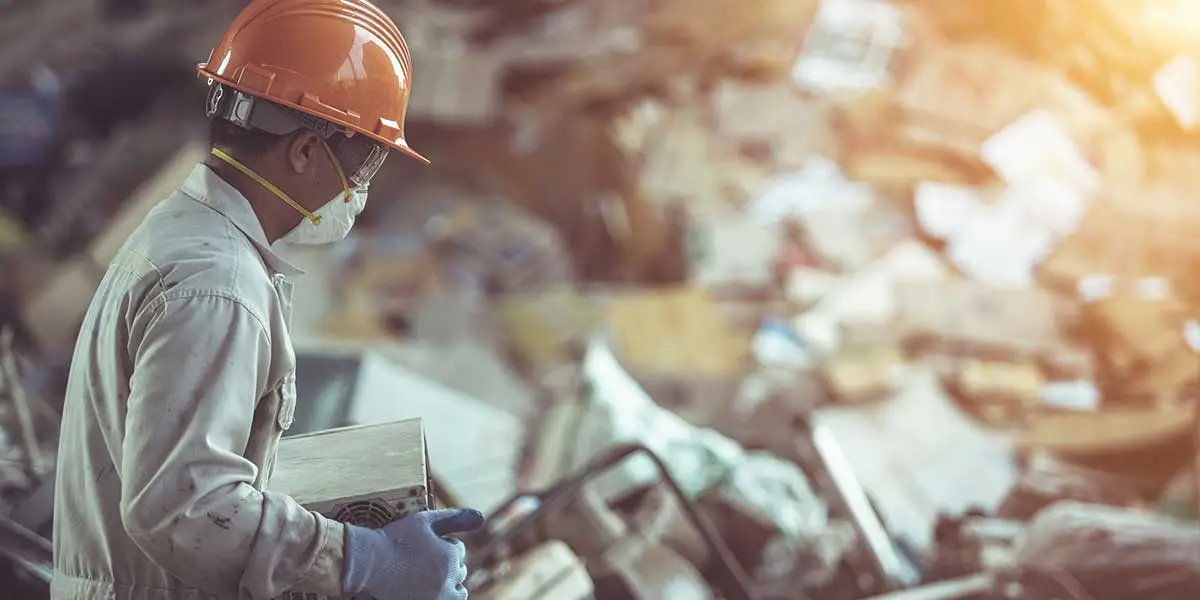
Aug 7, 2023
Blog The Technologies Revolutionizing The Electronic Waste Management Industry
Abandoned electronics, including phones, computers, televisions, refrigerators etc, are called e-waste. Electronic items contain unique harmful chemicals that, if not correctly disposed of, cause serious health and environmental issues.
The number of electronics produced is growing in number, which is pushing the global electronic waste management market to new heights. Valued at $54.4 billion in 2021, BCC Research expects the market to reach $108 billion by 2027, with growth at a CAGR of 12.6% from 2022 to 2027.
Diverse tactics are being adopted to reduce electronic waste's adverse environmental effects. These methods include recycling, reuse, repair, and appropriate disposal. Reusing and refurbishing electronic devices involves fixing or modernizing current models, which is a great way to increase a product’s life-cycle and lower the amount of e-waste produced. Plus, it helps foster local economies and job opportunities.
Another efficient method of handling e-waste is recycling. Valuable materials like gold, silver, copper, and other metals can be recovered by disassembling electronic devices. New electronic goods can be produced using these materials instead of raw materials and natural resources. Recycling lessens the amount of trash dumped in landfills, which can take a very long time to degrade.
The increasing amount of global electronic waste generated strongly impacts the environment and human health. Electronic waste management has become crucial for current societies and economies. However, land availability is becoming scarce, which poses a significant issue to waste management.
The difficulty of electronic waste management has driven the development of new technologies that consider energy production and materials recycling.
BCC Research’s latest report dives into the full technological background of electronic waste management. Discover hard data on the market and dive deep into how the industry operates. Make informed, strategic decisions as a result.
Plasma gasification is an emerging technology used for electronic waste processing. Gasification can extract recyclable commodity materials and convert carbon-based organic substances into fuel. The plasma gasification method can form a component of an electronic waste treatment system to achieve zero waste output and, at the same time, produce renewable fuels.
The method benefits both environmental protection and fuel energy production. Plasma arc processing has been used to treat electronic waste, such as incinerator ash and chemical weapons, and convert them into nonelectronic slag. The method for electronic waste treatment is still new. Still, it has great potential to operate more efficiently than other pyrolysis and combustion processes due to high-temperature operation conditions, heat density, and the almost total conversion of carbon-based materials to syngas and nonorganic slag. Syngas is a simple fuel gas comprised of carbon monoxide and hydrogen that can be combusted directly or refined into higher-grade fuels and chemicals.
Slag, the cooled residue of melted waste, is a glass-like substance that is safe for the environment and can be used as a construction material in roads, buildings, and more. Plasma torch technology has proven reliable at destroying electronic waste and can help transform environmental liabilities into renewable energy assets.
Molten metal is a relatively new technology that can be used for metal separation and recycling from electronic waste. It is widely used throughout Japan but has not yet made significant inroads into other countries. This technology originated in the steel industry, where active dry wastes like metal and concrete are combined in a ceramic canister and melted by high-frequency induction at a melting temperature of about 1,500°C. Molten iron, which is the heat source for the process, has a high heat capacity, heating relatively slowly, retaining the heat, and then cooling slowly. The process uses a standard steel converter with molten iron or slag to heat the waste, forming a stabilized ingot that can be disposed of in landfills.
Metals, gases such as chlorine, fluorine, hydrogen, and oxygen, and a ceramic slag phase can usually be recovered from the process. In principle, the process can operate without releasing gases into the atmosphere. Carbon monoxide and hydrogen produced in the process can be used for fuel or synthesis. In practice, however, the product gas will probably be combusted as an energy source for the process, and excess gas will flare. Because of these significant volumes of off-gases, the process can be expected to require treatment, and conventional gas cleaning systems will require considerable capital.
Alternatively, consider becoming a member of the BCC Research library. Membership grants access to the full scope of reports within your chosen category. Enquire into membership with a helpful member of our team today.

Olivia Lowden is a Junior Copywriter at BCC Research, writing content on everything from sustainability to fintech. Before beginning at BCC Research, she received a First-Class Master’s Degree in Creative Writing from the University of East Anglia.

We are your trusted research partner, providing actionable insights and custom consulting across life sciences, advanced materials, and technology. Allow BCC Research to nurture your smartest business decisions today, tomorrow, and beyond.
Contact UsBCC Research provides objective, unbiased measurement and assessment of market opportunities with detailed market research reports. Our experienced industry analysts assess growth opportunities, market sizing, technologies, applications, supply chains and companies with the singular goal of helping you make informed business decisions, free of noise and hype.